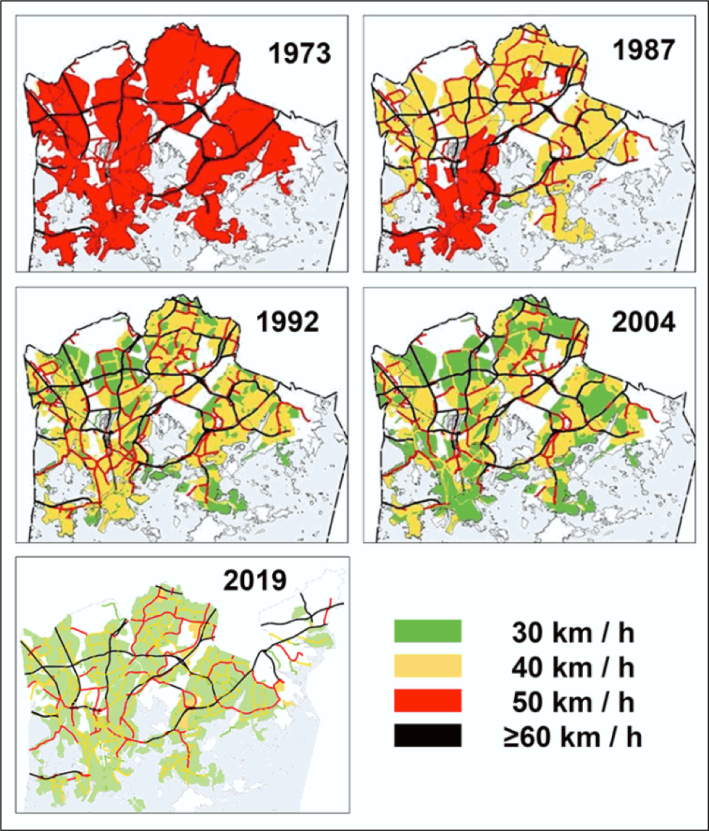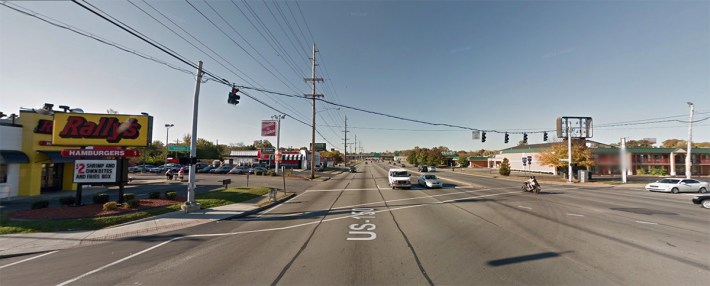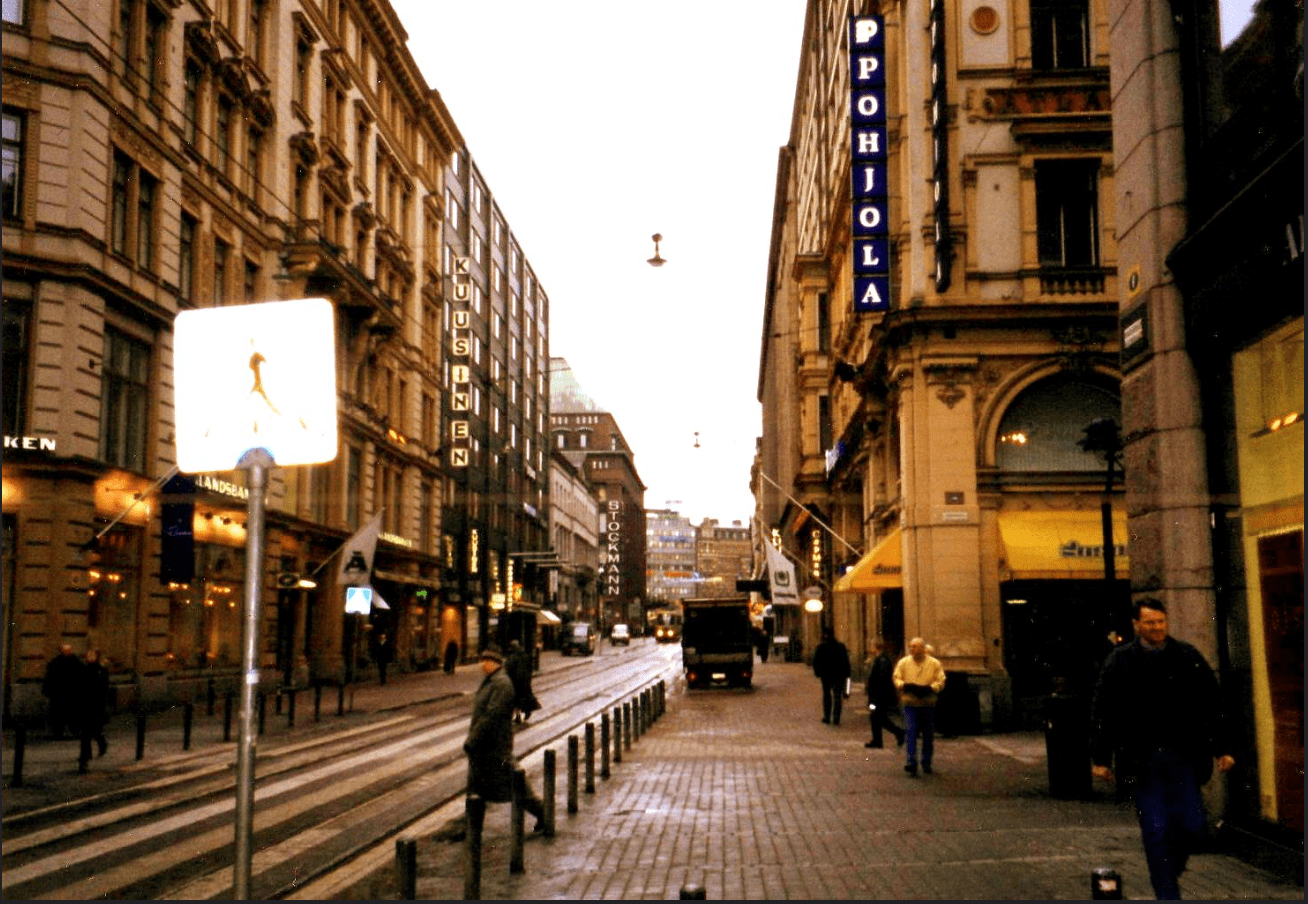Coord invites cities and other curb managers to apply for its Digital Curb Challenge to undertake a free curb management pilot program in 2020. Applications close on Feb. 14. Click here for information.
Another world-class city has proven that Vision Zero isn't just wishful thinking — and its example puts the pressure on American communities to stop street carnage now.
City leaders in Helsinki, Finland, recently announced that they've achieved the seemingly impossible (to car-loving Americans, at least): zero pedestrian and cyclist fatalities on its streets in an entire calendar year. That makes them the second Scandinavian capital to eliminate walking and biking deaths lately — Oslo, Norway, announced last month that no one died on its roads in 2019 either, save a single driver who crashed into a fence (three motorists died in Helsinki, according to the city's urban environment division, which is what forward-thinking cities call their "traffic department.")
It's a remarkable achievement, given that Helsinki is home to 631,695 people. Meanwhile, back in auto-centric America, the U.S, city with the most closely comparable number of residents, Louisville, was a scene of typical U.S. carnage: 63 non-interstate roadway deaths in 2018, the last year for which fatality totals are available. Pedestrians accounted for 23 of those deaths, and six were cyclists. And for all three data points, that's a five-year low.
We got a curious about what we could learn from Helsinki's success. Here are several takeaways:
Slow down cars
Of all the steps Helsinki leaders have taken to curb roadway deaths, the most impactful one has also been the most obvious: they slowed cars way, way down.
The map below shows speed limits in the city for the past five decades. If you don't speak metric system, we'll save you some googling: 30 kilometers per hour (that's the speed limit in all those soothing green parts of the map) is about 18.6 miles per hour; 40 kilometers (yellow) is about 25 miles; 50 kilometers (red) is 31 miles, and 60 kilometers (the black lines representing major arterials) is about 37 miles.

Here's a nifty interactive map of Louisville's speed limit landscape right now. On this map, red indicates a blistering 65 mile per hour limit — and don't bother trying to find a road with a speed limit of 20 miles per hour or less. There aren't any.
It's street safety 101: speed kills. If a pedestrian is hit by the driver of an average-sized car traveling at 20 miles per hour, the walker will have a 95 percent chance of surviving the crash. If that same car speeds up to just 30 miles per hour, though, the same pedestrian's odds drop to somewhere between 55 and 63 percent. And if the driver nudges the gas pedal a little further and hits 40 miles per hour? The pedestrian's only walking away from that crash alive 15 to 17 percent of the time.
But here's what's really radical about what Helsinki did (though it certainly shouldn't be): leaders looked at the probability of pedestrian death even in the slowest collisions on their streets, and said that a 5-percent fatality rate was was still too high. And so they cut the average speed limit more.
Not too long ago in Louisville, a driver got caught doing 93 on the state freeway, fought the citation on the grounds that the 55 mile per hour road sign he blew past was "unconstitutional and vague," and he won. Kentucky and Finland might as well be on different planets, for all the two cities have in common when it comes to taking action to slow down cars.
Human-centered street design
Of course, no city can slow down car traffic just by putting up signs. It's been proven countless times that using human-scale road design to functionally force drivers to lay off the gas is far more effective than simply putting up a slow speed limit sign on a roomy, freeway-style road.
Helsinki certainly didn't slow its traffic through the fear of enforcement alone. It also invested heavily in the kind of infrastructure that makes biking, walking and transit truly attractive — and driving a downright inconvenience.
A cyclist in Helsinki can enjoy over 745 miles of protected bike paths, a major amenity that's usable year-round even in the blizzard-prone Nordic North, thanks to an impressive winter snow clearance program. (We won't bore the non-bike-nerds in the audience, but let's just say that if the words "gritted lanes rather than bike-corroding salt" get you salivating, the Guardian has a really great recent article about the Finns' winter cycling culture for you.)
Even the architecture of the downtown streets that are shared with cars prioritize non-car travel to an astonishing degree. Seriously, this photo is like an I Spy puzzle for good road design:

And look — that delivery truck on the right still got to its destination without completely designing the entire street around the comfort and convenience of the truck driver! Imagine that!
That comprehensive focus on human-scaled design has paid big time dividends for the city's pedestrians and cyclists. For trips under four miles, the quickest way to get around Helsinki is by foot or bike.
That's not true in sprawling Louisville, which spreads its comparably sized population across 398 square miles, compared to Helsinki's 82.5-square-mile footprint. (And by the way: that's still not particularly dense by European standards. It doesn't even make the "densest European cities" Wikipedia page.) The Derby City has 85 miles of bike lanes, few of which are actually protected — Helsinki has about nine times as many miles of protected paths, if you're counting — and we probably don't need to tell you much about how dismal things are for pedestrians in autocentric towns like Louisville. If you've spent any time anywhere in America, this typical street probably looks pretty familiar to you:

Louisville's most recent budget set aside a negligible $400,000 for on-street bike improvements. Hundreds of Kentuckians told their local newspaper that they wanted to see that funding cut ... to solve the $35-million budget shortfall. Good luck with that math, guys.
Transform transit
OK, we know we're not blowing anyone's mind with the revelation that cosmopolitan European cities have trains. But what's interesting about Helsinki's approach to public transportation is its refreshingly modern approach to public transportation tech.
Helsinki is home to the headquarters of MaaS Global, a mobility firm whose name acronyms out to "mobility as a service." MaaS grabbed a lot of headlines a few years ago for the launch of its innovative Whim app, which allows Helsinkians (and citizens of a handful of other lucky pilot cities) to compare and purchase trips on public transportation, ride-sharing services (including a cutting-edge Uber/bus hybrid), and micromobility services like e-scooters — all on one app. City transportation officials credited Whim with a rise in bike share usage and portrays it as an integral part of the city's strategy to make shared mobility solutions so convenient that individual car ownership is rendered obsolete.
Between Whim and the convenience and reliability of the public transportation system itself, Helsinkians take an impressive 504,000 transit trips every day between its metro and tram systems. Louisville has a bus network, and no trains at all. It boards just 41,000 daily riders.
A culture united against carnage
We made Louisville our example here because it's comparable in population to Helsinki, but most of our critique of the Derby City could be applied to communities across the United States, large and small. That's because it shares something crucial with all the other U.S. cities that haven't adopted Vision Zero policies, or enforced them rigorously: its leaders aren't treating traffic violence like the preventable public health epidemic it is.
What's most impressive about Helsinki's Vision Zero victory isn't that the city took advantage of robust national funding for transit, or even that it didn't decimate its car-unfriendly historic development pattern to pave the way for cars the way American cities did. It's that Finnish leaders recognized that the key to making streets safe is to encourage sustainable transportation of all kinds — and discourage private car ownership by all means available.
Or, hey, we could be wrong! Curbed's Alissa Walker had an intriguing theory on how Helsinki crushed its carnage-curbing goals:
So amazing they were able to get all 600,000 people in Helsinki to cross only in crosswalks, wear bright-colored clothing, and never look at their phones for an entire year https://t.co/KnqXhyrHEG
— Alissa Walker (@awalkerinLA) February 8, 2020
Yeah, Walker's kidding here. But we're not: it's time for every American city to follow Helsinki's lead. After all: isn't America supposed to be the best?






